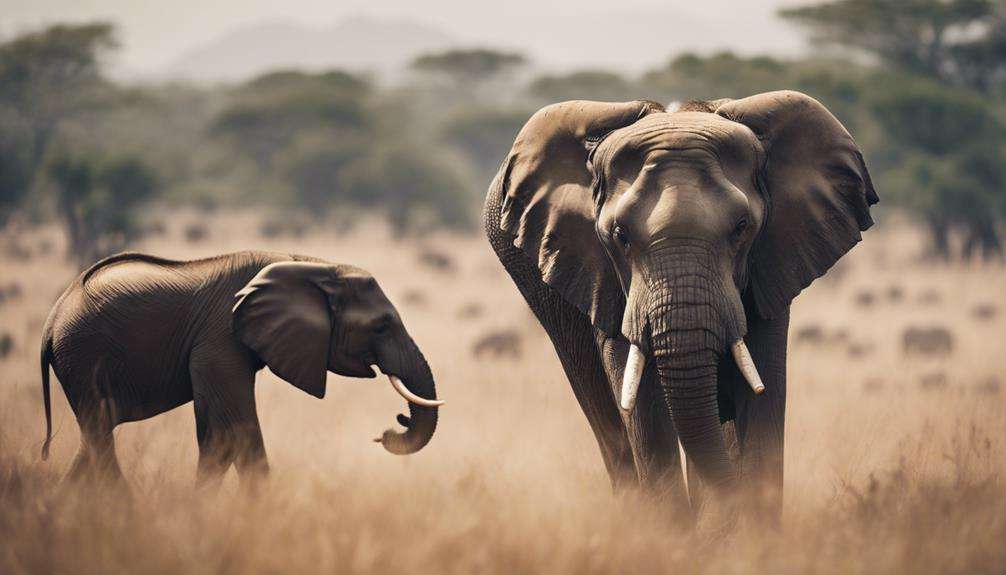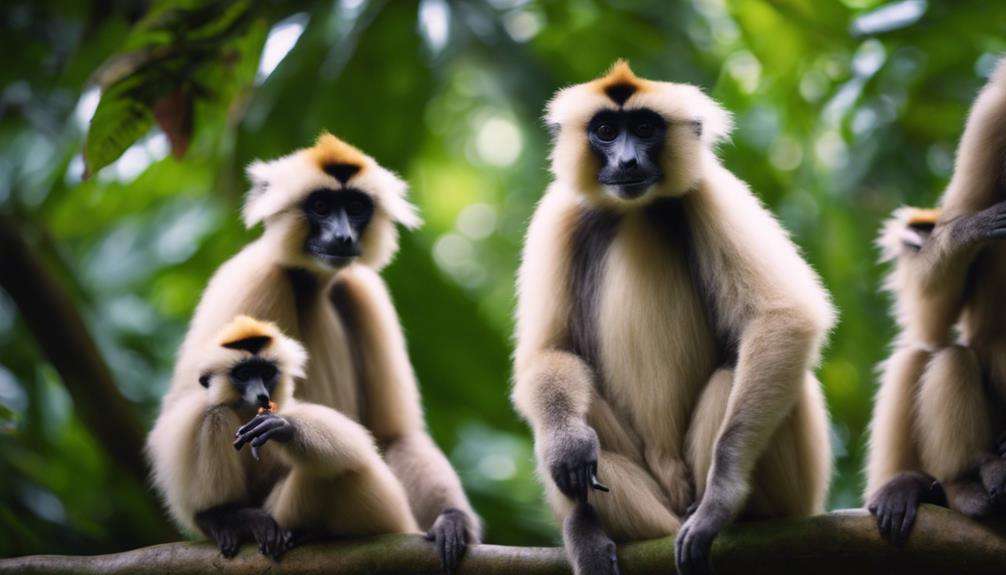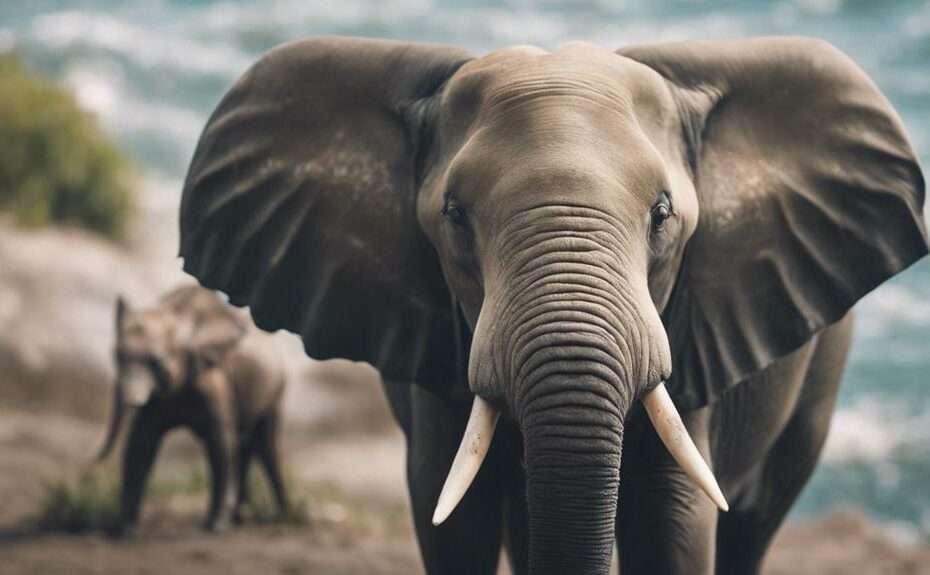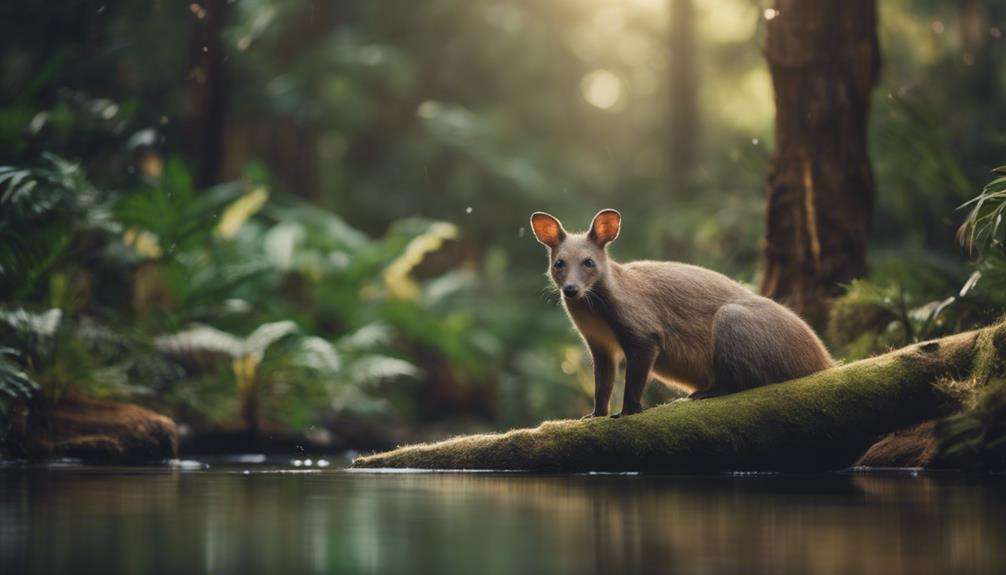Did you know that some mammals produce sounds higher than expected based on their body size?
When exploring the realm of vocal communication in the animal kingdom, it is intriguing to discover the 7 best vocal communicating mammals that showcase a remarkable array of vocal abilities.
From the depths of the ocean to the heights of the trees, these creatures exhibit unique vocal talents that offer a glimpse into the complexity and diversity of mammalian communication.
Each species brings its distinctive vocal repertoire to the table, inviting you to explore the fascinating world of animal communication further.
Key Takeaways
- Marine mammals like dolphins and humpback whales use diverse vocalizations for communication.
- Terrestrial mammals such as elephants and howler monkeys employ vocalizations to convey emotions and intentions.
- Avian vocal communicators like songbirds exhibit intricate vocal control for territory establishment and mate attraction.
- Ground-dwelling communicators like prairie dogs showcase advanced communication systems within their burrow networks.
Dolphins: Masters of Underwater Communication
Dolphins demonstrate mastery in underwater communication through the intricate use of whistles, clicks, and burst-pulse sounds, showcasing their exceptional vocal abilities in the marine environment. These vocalizations aren't mere sounds but finely tuned signals that convey a wealth of information essential for their survival and social interactions. Operating at frequencies of up to 150 kHz, dolphins can communicate effectively even in the challenging underwater realm where sound travels faster and farther than in air.
One remarkable aspect of dolphin communication is the use of signature whistles, unique vocal patterns specific to individual dolphins. These signature whistles serve as a form of vocal identification, allowing dolphins to recognize and bond with one another within their pods. Through these specialized vocalizations, dolphins establish social hierarchies, coordinate group activities such as hunting, and maintain strong social bonds that are crucial for their well-being in the vast oceanic expanse.
Songbirds: Melodious Avian Communicators
In the realm of avian communication, songbirds stand out for their intricate vocal abilities and diverse repertoire of melodious songs, reflecting their crucial role in social interactions and territorial behaviors.
Key Points:
- Songbirds are known for their diverse and melodious vocalizations, often incorporating complex songs with multiple notes and patterns.
- Some species, like the nightingale, can produce over 100 different song variations to attract mates and defend territories.
- They've specialized vocal muscles and structures that enable precise control of pitch, volume, and frequency.
- Male songbirds typically sing to establish territories, attract mates, and communicate with other birds, while females use vocalizations for social interactions and nest defense.
Songbirds exhibit a remarkable ability to learn and produce a wide range of sounds, showcasing their good vocal learning skills. Their small body size doesn't limit the complexity of their songs, highlighting the incredible vocal abilities present across various species of songbirds in the animal kingdom.
Elephants: Deep and Rumbling Vocalizations

Known for their deep and rumbling vocalizations that can travel over long distances, elephants use infrasound to communicate with distant herd members and potentially detect seismic vibrations. These vocalizations, rich in low frequencies, play a crucial role in elephant society. The ability to produce infrasound allows elephants to maintain contact with separated herd members, convey emotional states, and coordinate group movements across varied terrains.
Through the study of elephant vocalizations, researchers gain valuable insights into the intricate social structures of these majestic animals. The deep and rumbling calls not only facilitate long-distance communication but also serve as indicators of the elephants' emotional well-being and intentions within the herd. Understanding the nuances of their vocalizations provides a window into the complex communication system that underpins elephant interactions.
Infrasound is a powerful tool that enables elephants to navigate dense forests, open savannas, and other habitats while staying connected with their companions. By delving into the depths of these low-frequency communications, scientists can unravel the mysteries of elephant behavior, cognition, and the bonds that tie these intelligent creatures together.
Howler Monkeys: Loud and Distinctive Calls
Howler monkeys exhibit remarkable vocal abilities, utilizing their loud and distinctive calls in the dense rainforests of Central and South America.
Their specialized hyoid bone serves as a resonating chamber, amplifying their deep sounds that can travel up to 3 miles.
These vocalizations play a crucial role in their communication within social groups, territorial establishment, and predator warnings.
Howler Monkey Vocalization
Famed for their resonant vocalizations that carry through the rainforest, howler monkeys utilize their distinctive calls for various crucial social and ecological purposes. These vocalizations, produced by enlarged hyoid bones, serve as deep calls for communication, territory establishment, and mate attraction. Ranging from 80 to 1,200 Hz, howler monkey calls are among the loudest terrestrial animal sounds, reaching distances of up to 3 miles in the dense forest. Their unique vocal abilities play a significant role in shaping social dynamics and ensuring survival within the intricate rainforest ecosystem.
- Enlarged hyoid bones for deep calls
- Communication with group members
- Territory boundary establishment
- Mate attraction
Communication in the Wild
In the dense rainforest, the resounding vocalizations of howler monkeys serve as crucial signals for communication, territorial demarcation, and mate attraction, echoing through the lush canopy with remarkable intensity.
Howler monkeys' loud vocalizations, reaching sound levels of up to 140 decibels, are enabled by their enlarged hyoid bone, producing distinctive calls that carry over 3 miles.
These vocalizations play a vital role in maintaining the social structure of howler monkey groups, aiding in coordinating movements, warning of predators, and establishing territory boundaries.
Furthermore, the study of howler monkey vocalizations provides valuable insights into their behavior and ecological roles in the wild, highlighting the significance of their communication in the intricate dynamics of the rainforest ecosystem.
Social Significance of Calls
Their distinctive calls, characterized by deep, guttural roars produced by enlarged vocal cords in males, are integral to the social fabric and communication system of howler monkeys.
- Howler monkey calls help maintain group cohesion
- Establish territory boundaries
- Serve as mating signals
- Convey dominance within the troop
These vocalizations aren't merely sounds echoing through the forest; they're the threads that weave the intricate tapestry of howler monkey society.
From defining territory boundaries to signaling dominance and organizing troop structure, the social significance of these calls can't be overstated. Each pitch and intensity variation in their calls conveys a specific message crucial for the functioning and harmony of the troop, highlighting the sophisticated communication system of these fascinating primates.
Humpback Whales: Complex and Melodic Songs
Renowned for their intricate and melodic songs, humpback whales exhibit a remarkable ability to communicate through a wide range of frequencies underwater. Their vocalizations, ranging from 40 Hz to 4,000 Hz, aren't only complex but also travel vast distances across the ocean, enabling communication over extensive areas.
These songs are integral to their social interactions and mating rituals, playing a crucial role in the dynamics of humpback whale groups. What sets humpback whales apart is their capacity to modify and innovate their songs over time, showcasing advanced vocal communication skills that intrigue researchers studying their behavior, migration patterns, and group dynamics through these distinctive acoustic signals.
Through the study of humpback whale songs, scientists gain valuable insights into the intricate communication network that underpins the lives of these majestic marine mammals.
Prairie Dogs: Intricate Burrow Communication

Prairie dogs have evolved a sophisticated system of communication within their burrow networks. They exchange alarm calls to warn each other about different types of threats, displaying a high level of social coordination.
Through their intricate vocalizations, prairie dogs can effectively convey detailed information about predators to ensure the safety of their community.
Burrow Signaling Systems
Intricate burrow signaling systems utilized by prairie dogs demonstrate a high level of sophistication in their vocal communication for survival in their environment.
- Prairie dogs use specific vocalizations to convey messages about predators, food sources, and individual recognition.
- The communication network within prairie dog colonies aids in coordinating activities and warning of potential threats.
These systems are an integral part of their complex social structure, allowing for efficient information exchange.
- Burrow signaling reflects the prairie dogs' ability to communicate in a detailed and coordinated manner, showcasing their advanced vocal communication skills essential for their survival.
Alarm Call Exchanges
The intricate system of alarm call exchanges among prairie dogs within their burrow networks showcases a remarkable level of communication sophistication essential for their survival in the wild. Prairie dogs utilize specific alarm calls to convey detailed information about potential threats, including the type of predator, its size, and the level of danger posed.
By differentiating their call structures for aerial and ground predators, these animals enhance communication accuracy and efficient response mechanisms. Studies have demonstrated the prairie dogs' ability to recognize and remember individual calls, enabling them to identify specific group members.
This advanced vocal communication within their burrow communication system highlights the prairie dogs' exceptional abilities for survival in challenging wild environments.
Social Group Coordination
Social coordination among prairie dogs through their complex burrow communication system relies on a sophisticated array of vocalizations to ensure efficient group functioning and survival strategies.
- Prairie dogs use a sophisticated system of vocalizations for social coordination.
- Distinct calls for different predators enable quick responses to threats.
- Vocal signals aid in individual identification and social cohesion.
- Specific information about predators' characteristics is conveyed through their calls.
The adaptability and complexity of the prairie dogs' communication system within their burrow networks highlight the crucial role of vocalizations in maintaining group dynamics and responding effectively to environmental challenges.
Gibbons: Harmonious and Melodic Vocalizations

Known for their harmonious and melodic vocalizations, gibbons utilize complex songs and calls to establish territories, attract mates, and communicate with family members. These vocalizations aren't mere sounds but rather intricate forms of communication essential to their social structures.
Gibbons possess a specialized throat structure that enables them to produce loud and clear vocalizations over long distances. Their songs can travel up to 2 kilometers through dense forests, making them effective long-distance communicators within their habitats. By using their melodic calls, gibbons not only mark their territories but also attract potential mates through their harmonious tunes.
The complexity of their vocal repertoire reflects the strong bonds within gibbon groups, with each unique call serving a specific purpose in maintaining social relationships. Through their melodic vocalizations, gibbons demonstrate a remarkable ability to convey emotions, intentions, and establish connections vital for their survival in the wild.
Frequently Asked Questions
What Animal Has the Best Communication?
When evaluating animal communication, you find remarkable diversity. Dolphins' language, prairie dogs' calls, whale songs, elephant trumpets, koala grunts, wolf howls, gorilla grunts, orangutan vocalizations, parrot mimicry, and bat echolocation all demonstrate unique and intricate forms of communication.
What Mammals Are Capable of Vocal Learning?
Dolphins, seals, bats, and more are capable of vocal learning. They adjust sounds for varied purposes, mimicking their environment. Research shows they often produce higher-pitched sounds. Understanding their abilities offers insights into communication and evolution.
What Animals Use Vocal Communication?
When animals use vocal communication, they convey messages through sounds. Dolphin communication, elephant vocalizations, prairie dog calls, wolf howling, orca communication, bonobo vocalizations, gibbon singing, koala grunting, squirrel chatter, and gorilla chest beating showcase diverse ways animals communicate.
What Mammals Have Vocal Cords?
You have vocal cords like those in gorilla calls, dolphin sounds, elephant trumpets, lion roars, whale songs, bat echolocation, gibbon hoots, prairie dog barks, parrot mimics, and wolf howls. These cords allow varied communication in mammals.
Conclusion
As you delve into the world of vocal communicating mammals, you're transported to a symphony of sounds – from the haunting melodies of humpback whales to the harmonious calls of gibbons.
Each species, with its unique vocalizations, paints a vivid picture of intricate communication systems honed over millions of years of evolution.
These vocal learners not only captivate our senses but also offer a glimpse into the rich tapestry of communication strategies employed by different mammals in their natural habitats.






